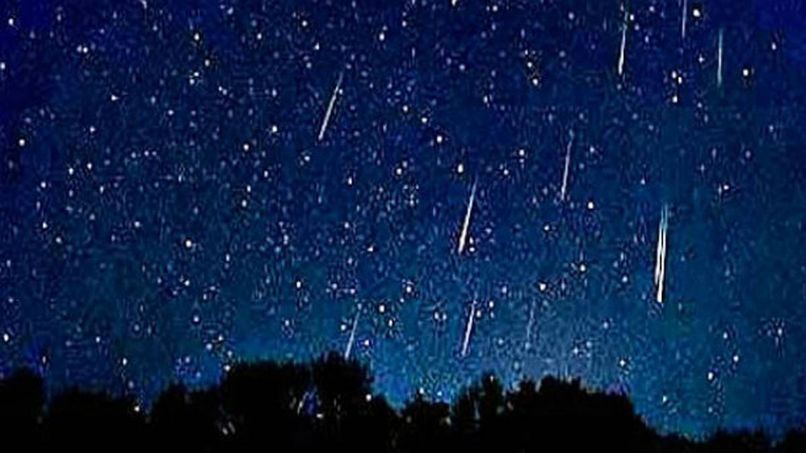Among the most fascinating and striking cosmic events that can be observed from Earth, is the meteor shower. An event that amazes the naked eye, bringing with it a captivating light show. Without a doubt, it is a unique experience worth witnessing at some point.
It may seem that they are events that occur in isolation and unpredictably. Likewise, it is common to think that, to see a meteor shower, you must have a stroke of luck. Although it is partly true, it is surprising to know that meteor showers are more common than they seem. In that sense, you just have to be prepared and know when they will arrive.
You may also be interested in our article: Do you want to know who was the first woman in space?
All the details of a shower of stars, at your fingertips
In short, a shower of stars or also known as meteor shower, are stellar events of general interest. Beyond being considered as an object of constant study, it has tremendous popularity among the masses. By virtue of this, it is not necessary to be an expert to be a lover of space and everything that it encompasses.

Source: Google
Turning to the technical point of view, a meteor shower is generated from comets or meteors. Following the primary or cometary method, a series of important aspects must first be taken into account.
Comets, as they orbit around the Earth or within the Solar System in general, interact with other factors. These they are the solar wind and the own energy released by the parent star. When space weather hits the comet's surface, it causes the release of cosmic particles from it.
These particles, commonly referred to as "meteor swarms," also follow the comet's orbit relative to a celestial body such as Earth. At a certain point, the swarm enters the atmosphere, burning due to the effect of contact and friction until it produces rain.
Within the second case, depending on the size, a meteor or meteorite is capable of producing a shower of stars. Being as small as a vase, the meteors defragment on contact with the atmosphere, starting the shower as such. However, its magnitude will not be equated with the previous scenario.
If they are so common… So, when will the next meteor shower of 2020 be?
As mentioned, these events are more common than they appear to be. Therefore, to understand more clearly about them, you must first navigate through the types of meteor showers.
Annually, up to 7 types of stellar events occur that completely fall in love with the public. Each and every one of them covers a certain time or period of the year, so that, at any moment, they can be observed. Of course, as long as the appropriate measures are taken for this purpose.
The beautiful Quadrantids
In the space between January 1st and 5th, the beautiful rain of the Quadrantids occurs. That is, it was a 2020 meteor shower that arose within the first month of the year.
Particularly, it is an active, bright and constant rain while it lasts. They are easily visible from any point, as long as there is no light pollution. On the contrary, they are the simplest and easiest to locate.
April and the return of the Lyrids
After the Quadrantid event occurs, you must wait until April to observe a meteor shower again. Specifically, between April 16 and 26 as such, it is where one of the most intense rains occurs. They are even peculiarly known as "Lyrid Fireballs" due to their enormous luminosity.
The constant sighting of the Perseids
The Perseids, They owe their name to the popular constellation of Perseus, being one of the longest meteor showers of 2020. In fact, its duration period covers the days between July 17 and August 24 as such. Likewise, they are observed as typical shooting stars, without much luminosity, but at an incredible speed.
The mighty Draconids
Associated with the Dragon constellation, they are a type of meteor shower that occurs in October. As such, it covers the days from October 6 to 10, with a maximum boom the last two nights. In turn, the spark and luminosity is greater compared to the Perseids, so they are even visible even at sunset.
The Orionids and their long nocturnal presence
Coming from the constellation of Orion, the Orionids They also have a high activity level. Being one of the longest, it includes the days from October 2 to November 20 in general. At first glance, it is a quick shower, not very radiant but captivating all the same.
The colorful Leonidas
Known best for heralding an intense reddish flash plus a trail of green, the Leonids appear. They run from November 6 to November 30 specifically, decorating the skies with their range of colors.
The enigmatic Geminids
From December 7 to December 17, the Geminids make their presence on Earth. With a point of origin near the Gemini constellation, it is a long-lasting, powerful and highly active meteor shower. She is in charge of decorating the atmosphere when December arrives.
How is it possible to observe a meteor shower today? Learn the best trick!

Source: Google
The first step to visualize a meteor shower today or today, is to know exactly your approaching date. Similarly, as a tip, meteor showers are more visible during the early morning.
The reason is simple, at that time, they reach their highest point of entry to Earth. That is to say, their main contact with the atmosphere will be greater and longer lasting, so they will express more luminosity.
Then, another important step is to get away from the city, entering a point where light pollution does not interfere. Next, knowing the location of some constellations, the corresponding one is located. However, observing a meteor shower today is possible even without the guidance of a constellation, since they shine throughout the sky.